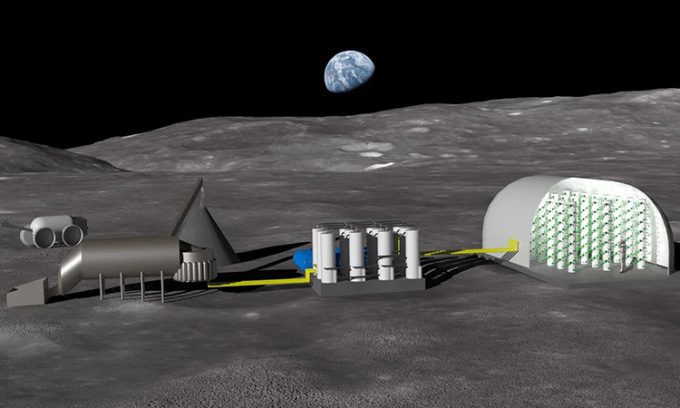ESA is collaborating with the Norwegian company Solsys Mining to develop a method for converting lunar soil into fertilizer for hydroponic crops.
Growing plants on the Moon is essential for the ambition of establishing a long-term human presence on the celestial body, but this is an extremely challenging task due to the lack of nitrogen compounds in lunar soil, which play a crucial role in plant growth.

Simulation of hydroponic farming methods on the Moon. (Photo: ESA).
The European Space Agency (ESA) is collaborating with the agricultural company Solsys Mining, the Norwegian Geotechnical Institute, and the Interdisciplinary Space Research Center to explore a new approach: hydroponic farming.
Hydroponics involves growing plants in nutrient-rich water instead of soil. It has been widely used on Earth, especially in vertical farming facilities.
The project, led by ESA, focuses on finding the optimal method to extract the highest amount of nutrients from lunar soil to use as fertilizer for hydroponic crops. The research process is expected to continue until the end of 2023 with a budget of €100,000 (approximately $106,000).
Hydroponic farming on the Moon requires the construction of a processing plant on the surface of the celestial body to extract nutrients from the lunar regolith before pumping them into greenhouses for hydroponic crops.
“To establish a sustainable presence on the Moon, humans need to utilize available resources and access nutrients in the surface layer of the celestial body for cultivation,” emphasized ESA process and materials engineer Malgorzata Holynska in a press release on February 22. This research will pave the way for future lunar missions, such as NASA’s Artemis program.


















































